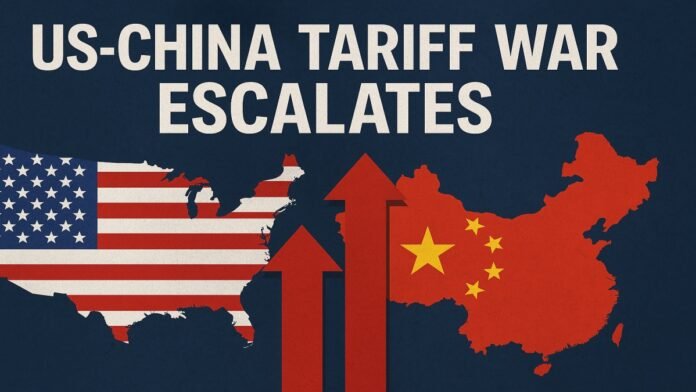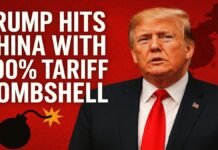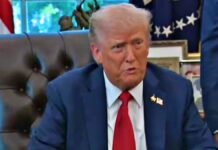
Key Points:
- The US has imposed a staggering 104% tariff on all Chinese imports, effective April 9, 2025.
- China retaliated with a 34% tariff on US goods, sparking a full-blown trade war.
- President Trump warned of further tariff hikes if China doesn’t withdraw its countermeasures.
- The escalating tariffs could disrupt global supply chains and raise consumer prices.
Washington D.C: The trade war between the United States and China has escalated dramatically as President Donald Trump announced a 104% tariff on all Chinese imports. This unprecedented move, effective from midnight on April 9, comes in response to China’s retaliatory tariffs and what the White House describes as “unfair trade practices.”
The White House confirmed that the new tariff includes earlier levies imposed in February and March, which initially stood at 10% before being incrementally increased. In retaliation, Beijing had imposed a 34% tariff on US goods earlier this week, prompting Trump to add an additional 50% tariff on Chinese imports. The cumulative increase now totals an extraordinary 104%.
Trump’s Stance
President Trump justified the move as necessary to protect American industries and workers. “China has been robbing billions from our economy,” he stated, adding that the US would no longer tolerate such practices. Trump also accused China of failing to address issues such as intellectual property theft and fentanyl trafficking.
The President has warned of even higher tariffs if Beijing does not reverse its retaliatory measures. Additionally, all trade negotiations with China have been suspended indefinitely.
China’s Reaction
Beijing has strongly condemned the US tariffs, calling them “unilateral bullying” and vowing to “fight to the end.” China’s Ministry of Commerce described the tariffs as “groundless” and pledged further countermeasures to safeguard its economic interests. Premier Li Qiang expressed confidence in China’s ability to withstand external shocks, emphasizing that the country’s macroeconomic policies are designed to ensure stability.
China has also restricted exports of rare earth elements critical for US technology manufacturing and hinted at further economic actions against Washington.
Economic Impact
The escalating trade war is expected to have far-reaching consequences. Global supply chains are likely to face disruptions, with American consumers bearing the brunt of higher prices for goods such as electronics and toys. Stock markets have already shown signs of instability, with major indices in both the US and Asia experiencing sharp declines.
Economists warn that prolonged trade tensions could push the global economy closer to a recession. The European Union has also expressed concerns about the ripple effects of these tariffs and is urging both nations to resolve their disputes through dialogue.
Tariff Timeline
- February 2025: US imposes an initial 10% tariff on Chinese imports.
- March 2025: Tariffs double to 20%.
- April 2025: A 34% tariff is added by both countries.
- April 9, 2025: US implements an additional 50%, bringing total tariffs on Chinese imports to 104%.
Global Implications
The trade war between the world’s two largest economies is reshaping international trade dynamics. Many American companies are exploring alternative manufacturing hubs in countries like Vietnam and Mexico, but China remains a dominant supplier for key industries.
As tensions rise, other nations are scrambling to renegotiate trade agreements with the US while preparing for potential fallout from disrupted global markets.
With neither side showing signs of backing down, this standoff could mark a turning point in global economic relations.


















































